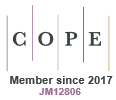Assessment and implementation of Expedited Partner Therapy at an academic medical center
Alena Kathryn Hoover A * , Leroy R. Thacker B and Frances E. Casey C
A * , Leroy R. Thacker B and Frances E. Casey C
A
B
C
Abstract
Expedited Partner Therapy (EPT) is the practice of treating sexual partner(s) of patients diagnosed with STIs without examining the partner(s) and is effective in reducing reinfection. It has been permissible in Virginia since 2020. This study aimed to assess knowledge and practices surrounding prescription of EPT at an academic medical center in Virginia before and after an online learning module.
Data were obtained via online anonymous RedCap surveys. The first was distributed via e-mail to providers who regularly diagnose and treat STIs at an academic medical center in Virginia. The survey assessed provider knowledge and practices regarding EPT and preference of future education. On the basis of the results, an online learning module with information on EPT was created and distributed to the same population of providers. The module contained pre- and post-module surveys evaluating participant knowledge of the legal status, methods of prescription, and attitudes surrounding EPT.
The initial survey showed that 10% of participants were aware of the new legal status of EPT. In terms of EPT prescription, 4% always prescribed EPT, 14% prescribed it sometimes, and 61% never prescribed it. In the pre-module survey, 31% of respondents correctly identified one option for prescription of EPT. Knowledge surrounding the legal status and prescription methods was significantly improved in the post-module responses, with 100% of participants able to identify one correct prescription option.
These results show knowledge gaps surrounding the Virginia EPT provision and policy change. These gaps improved with the implementation of an online learning module. Further evaluation is needed to assess the continued implementation of EPT.
Keywords: adult learning, chlamydia, Expedited Partner Therapy, gonorrhea, online learning, sexually transmitted disease, sexually transmitted infection, trichomonas.
References
1 Centers for Disease Control. National overview of STIs in 2023; 2024. Available at https://www.cdc.gov/sti-statistics/annual/summary.html
2 Virginia Department of Health. Data and reports; 2024. Available at https://www.vdh.virginia.gov/disease-prevention/disease-prevention/hiv-aids-sexually-transmitted-disease-std-hepatitis-reports/
3 Centers for Disease Control. Slides from STI surveillance; 2023. Available at https://www.cdc.gov/sti-statistics/annual/slides.html
4 Golden MR, Whittington WLH, Handsfield HH, et al. Effect of expedited treatment of sex partners on recurrent or persistent gonorrhea or chlamydial infection. N Engl J Med 2005; 352(7): 676-685.
| Crossref | Google Scholar | PubMed |
5 Golden MR, Kerani RP, Stenger M, et al. Uptake and population-level impact of Expedited Partner Therapy (EPT) on Chlamydia trachomatis and Neisseria gonorrhoeae: the Washington State community-level randomized trial of EPT. PLoS Med 2015; 12(1): e1001777.
| Crossref | Google Scholar |
6 Centers for Disease Control and Prevention (CDC). Expedited partner therapy in the management of sexually transmitted diseases: review and guidance; 2006. Available at www.cdc.gov/std/treatment/eptfinalreport2006.pdf
7 Expedited Partner Therapy. ACOG committee opinion: expedited partner therapy. Obstet Gynecol 2018; 131(6): e190-e193.
| Crossref | Google Scholar |
8 CDC VA. Legal status of EPT; 2024. Available at https://www.cdc.gov/std/ept/legal/virginia.htm
9 Code of Viriginia. § 54.1-3303. Prescriptions to be issued and drugs to be dispensed for medical or therapeutic purposes only. Virginia acts of assembly – 2020 Session. 2020: 3–6. Available at https://law.lis.virginia.gov/vacode/54.1-3303/
10 Casebeer LL, Strasser SM, Spettell CM, et al. Designing tailored Web-based instruction to improve practicing physicians’ preventive practices. J Med Internet Res 2003; 5(3): e20-84.
| Crossref | Google Scholar | PubMed |
11 Allison JJ, Kiefe CI, Wall T, et al. Multicomponent Internet continuing medical education to promote chlamydia screening. Am J Prev Med 2005; 28(3): 285-290.
| Crossref | Google Scholar | PubMed |


